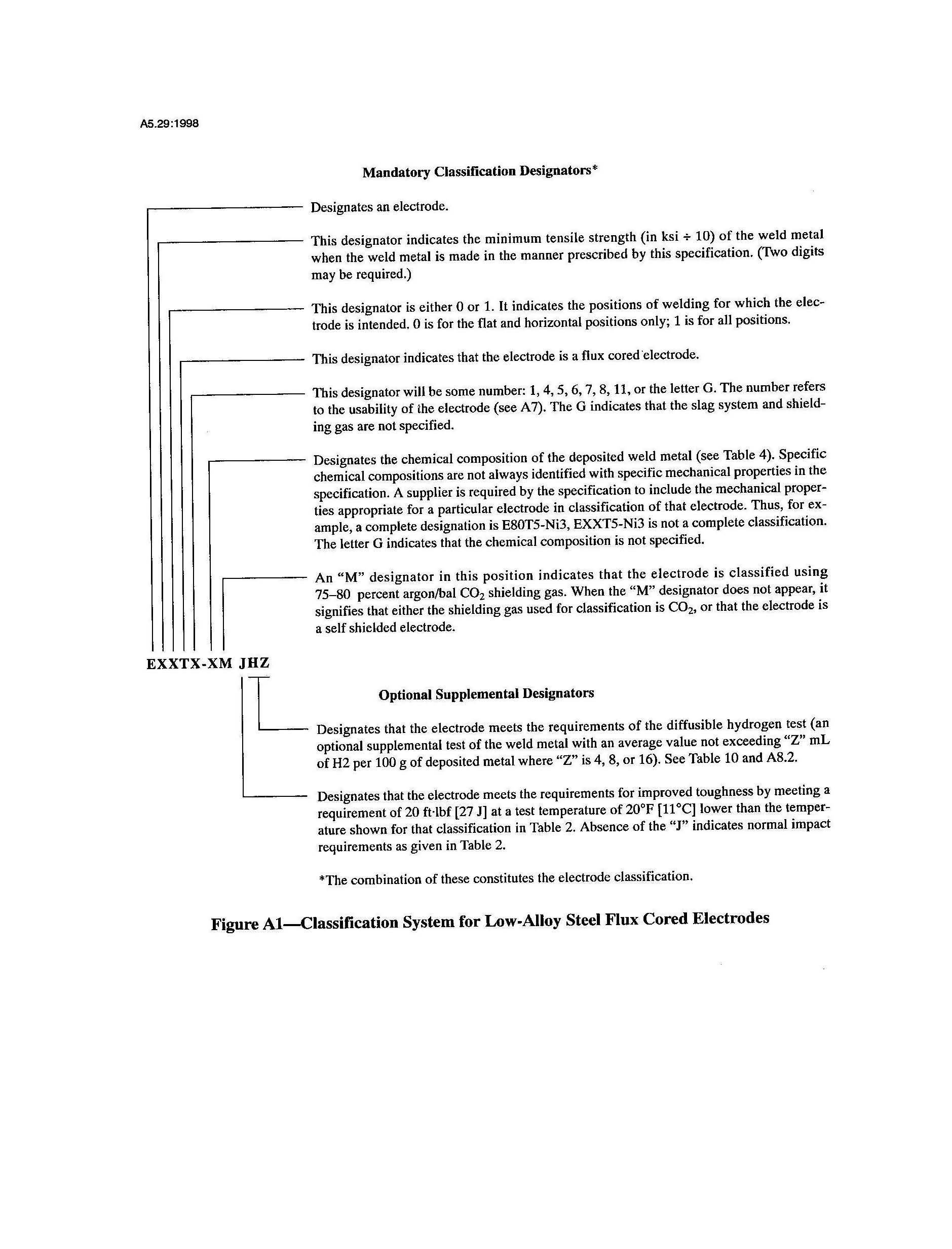
I agree with you, and I was waiting for you to point out exactly why but, I guess I'll have to get technical here...
The difference between a "totally" correct answer in this post as opposed to a "halfway correct answer" which is equivalent to "almost" which never end up being correct, is a simple "misread" on the part of the person's attempting to answer the question in the correct manner...
What I'm getting at is simple... the placement of the letter "G" without the horizontal line (Punctuation mark.)... A dash is a punctuation mark. It is longer than a hyphen and is used differently. The most common versions of the dash are the en dash (–) and the em dash (—) that is located in between the letter, and the last number of the specific FCAW Electrode type when reading it, starting from left to right is the key to proper interpretation of what the letter "G" is representing and therefore, critical to observe upon attempting to give the correct answer of the question as it is typed originally in the first post of this thread.
So to sum it up simply, if one doesn't notice the en dash (-) placed in between the last numerical digit of the specific AWS FCAW classification type written by the original poster of this thread as in the case of: "E81T1-G" then one can easily misinterpret the meaning of this specific type of FCAW filler metal...
This is also another example why some of us in here request that we try our best in not only practicing proper spelling but also, proper grammer - err I mean grammar ;), and the proper use & application/interpretation of graphic keyboard symbols so that we minimize our own misinterpretations from time to time... Yeah Right Henry!!! sounds like wishful thinking on my part so, I'll stop blabbering right here!!! BWWWAAAAHHHH, HAH, HAH, HAH!!! :) :) :)
One thing I noticed is the fact that these new medicines I'm currently on are definitely disturbing my normal sleep pattern...
Hmmmmm... That's it - I'm done!!! ;)
Respectfully,
Henry



